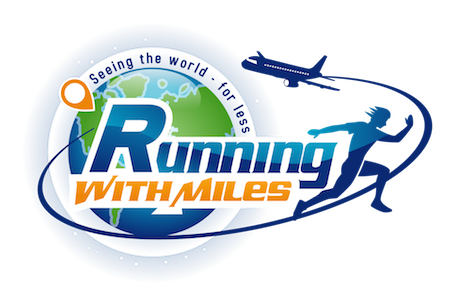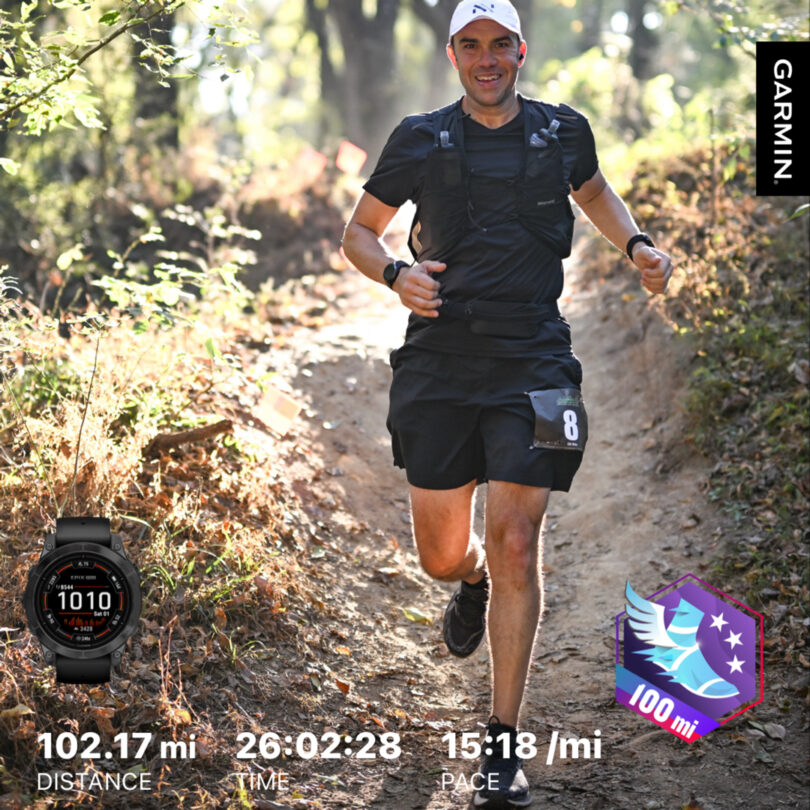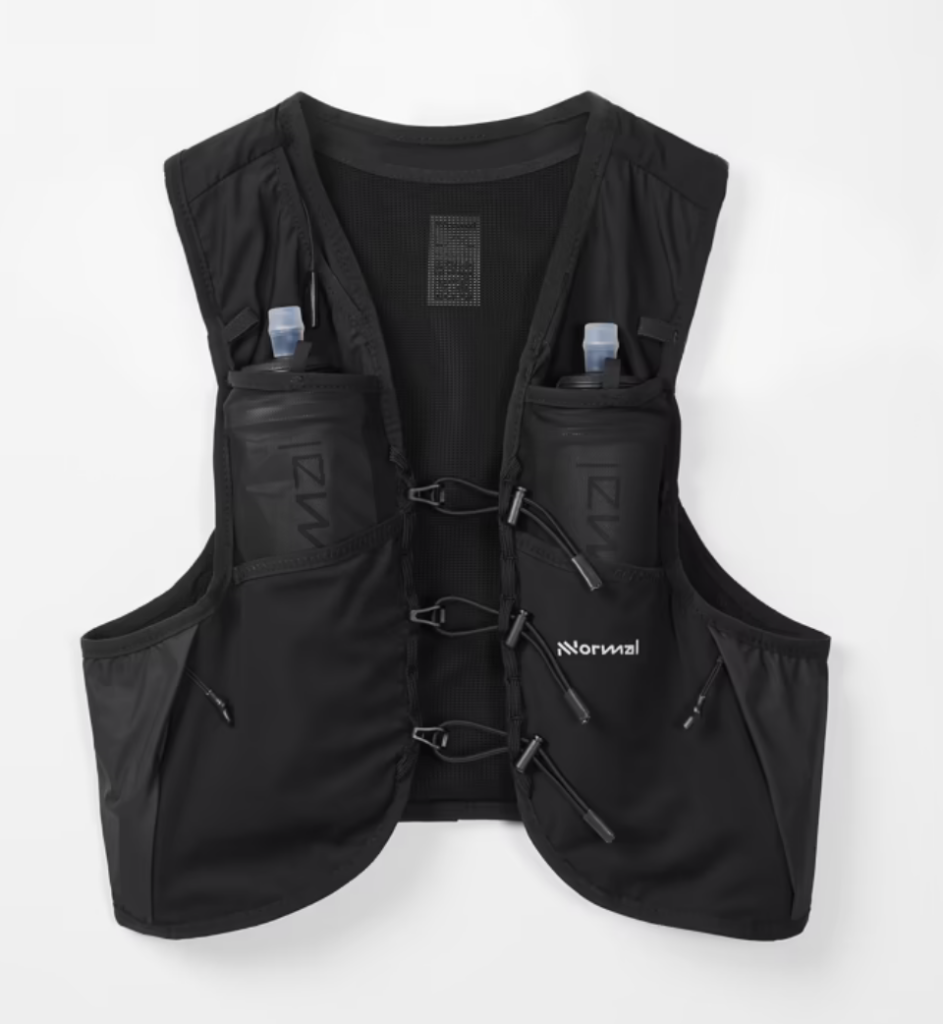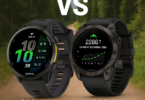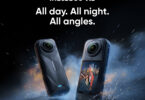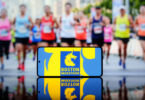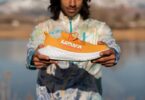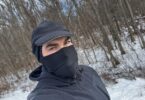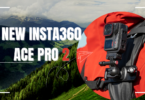Even though my first 100 mile race was a few months ago, there are still parts about it that I am processing. 🙂 I have had many people ask me a lot of questions about it – what it was like, how to push through the night without sleeping, training, gear, etc. There are certainly way better qualified people to speak from tons of experience in running 100 milers on some of those things but I did want to do my best to answer some of these the best I could. So, here is the first one – the gear I used running my first 100 mile race.
The Gear I Used Running My First 100 Mile Race
Any Amazon links are affiliate links that do pay me a commission if you buy using them – thanks for supporting the site!
If you check out some of the very experienced runners, you may find that they are running in quite a minimalist approach in regards to gear. But, since this was my very first 100 miler, I had redundant gear as well as covering for any eventuality I could think of. So, if you are thinking, oh man, that’s a ton of stuff – you are absolutely right. 🙂
The Bag
For starters, it was my very first trip in probably 15 years where I traveled without a carryon that was a roller bag. Instead, I opted for a duffel bag to make sure I could easily access all my gear and not worry about the bag getting dirty or wet.
So, for my bag for this trip, I went with the Peak Design 35L duffel. I have been a longtime Peak Design user for my camera gear and Everyday backpack so I knew that their duffel would work great for me – and it did. Kept my gear dry and clean while also giving me full access to what I needed during aid station stops.
The Shoes
Next up was my shoes. Now, this will depend entirely on what kind of 100 miler it is. This was a trail race but the race director said it was totally runnable in road shoes. This was good since my feet prefer my road shoes to my trail shoes – they are less stiff and offer a little more cushioning. I brought my trail shoes just in case but ended up fine with my road shoes.
Speaking of road shoes, some people do swap out shoes during ultra marathons or wear shoes a full size larger in anticipation of their feet swelling. I was very fortunate and able to wear a single pair the whole race. I didn’t even feel any “hot spots” on my feet for blisters or anything (though, when I did take my shoes off later, I was shocked to find 2 HUGE blisters on one foot. 🙂 Never felt them during the race!).
My shoes of choice are the ASICS Kayano 29 shoes. They offer the right support for my overpronation (where the foot turns in a bit on striking the ground) while also giving me more cushioning than the GT-2000 series shoes.
The Watch
For this race, I actually wore two watches – the Garmin Epix Pro on my left wrist and the COROS Apex 2 Pro on my right wrist. I had used the COROS for a while exclusively earlier in the year and now I wanted to test them out head-to-head during a 100 miler to see how they did with battery life and GPS accuracy.
Both were excellent but the Garmin Epix Pro actually did better on the GPS tracking – by 2 whole miles. The battery life was also great on the watch. It was stellar on the COROS as well.
Honestly, either watch will work great for a 100 miler – but you definitely want to make sure whichever watch you choose as the battery life to easily last as long as you are out there. I was out there for 26 hours and I knew that both these watches could go that long. If you do things like limit which GPS systems the watches use or turn off heart rate tracking, you can get more time. But, watches like the Fenix series and the Apex or Apex Pro or Vertex will easily get you enough time for a 100 miler.
The Clothes
This rule holds true for any race when it comes to clothes but what you wear in a race should be something you have worn at least a few times before. If you were something brand new, there will be a bit of stiffness or similar that will not wear nicely right off the bat (at best) and could end up really chafing you (at worse). So, what you wear for a 100 miler (or any race over a 10K) should be something that you wear often and find comfortable.
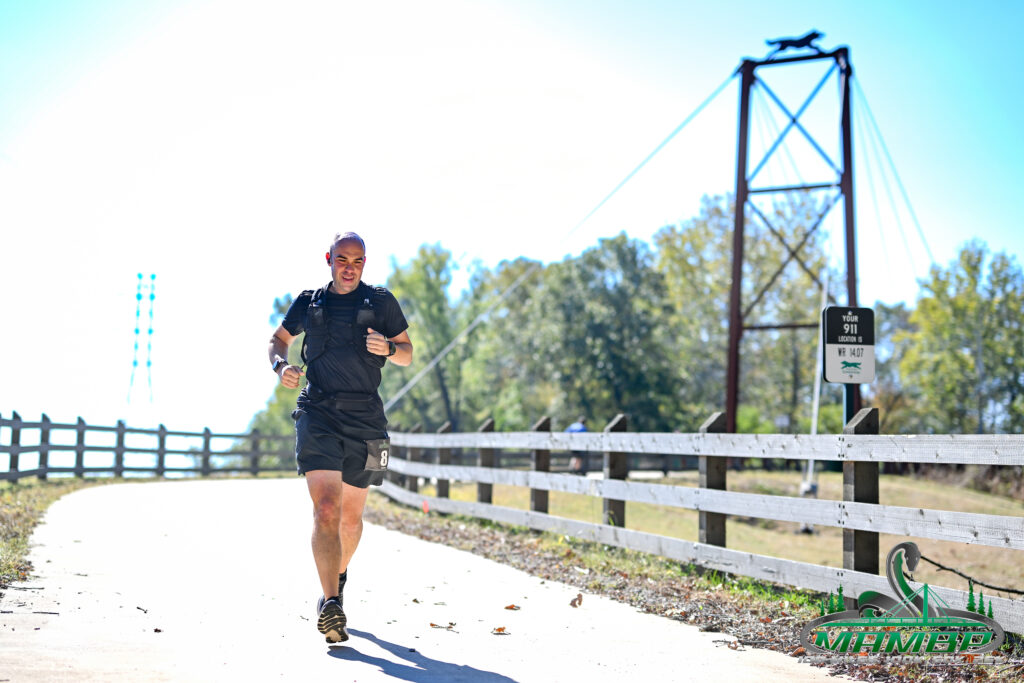
But, the good thing is that I was not running fast during my 100 miler. In fact, with an over all pace of just over 15 minutes per mile, I was doing a lot of walking as well. So, this means that you get a little more freedom with what you wear in a race like this than you do in a race like a marathon where you are at longer strides and higher cadences.
I have been an Under Armour fan for years – for two reasons. One is that I like how it feels but the main one is that I get it for like 70% off retail with stacking deals so why not! 🙂
I started the race (in somewhat cooler weather) with arm sleeves and an Under Armour short sleeve shirt and shorts. I also wore my usual Under Armour socks. For a hat during the sunniest part of the day, I wore my new favorite – my NNormal hat. Very lightweight and doesn’t get drenched with sweat.
As the day turned to night and the temps started to drop closer to low 40s/upper 30s, I put on an Under Armour insulated top, long sleeve running shirt underneath and Zensah compression leg sleeves (this wasn’t really about warmth but to improve circulation and help in active recovery). I also put a hat on when it got colder (because I did start to feel significantly chilled due to my exhaustion, darkness, and 39 degree temperatures).
Accessories
In addition to the gear above, there were a few other necessary things I used along the way. One was my hydration pack. This was also a new product I got from NNormal. Back about 12 years ago when I had last done ultramarathons (distances longer than 26.2 miles), I was used to the Camelbak style of hydration packs. A backpack with a bladder to a fluid tube. I was never a big fan of them because of how the water would always slosh around so I typically just used water bottles, either handheld or on a belt.
But, companies have switched it up and now use a vest with slots for hydration flasks – and this is a huge upgrade, in my opinion! While there were a lot of great options out there (including some like this from Salomon), I went with this one from NNormal since I had credit with them.
Next up was my SPIbelt. I use this for every single run as it has two expandable pockets, perfect for a phone and then keys/passport/wallet. In my case, I used the second pocket for my portable charging brick to make sure my phone was fully charged during the night. This is snug to my waste, not uncomfortably so, which makes it have zero bounce.
I did listen to audio books for probably 16 hours of the race. I used my iPhone for that and I used my Beats Fit Pro earbuds. I only ever run with one at a time so I can hear with the other ear so this worked great for this race. I would use one for about 6 hours, then put it in the charging case while I used the other one and then just keep swapping them. As a result, they lasted all the time I needed them and I never needed to charge the case.
Though, I was prepared for charging stuff if necessary! I brought along my V-mount battery I use for my cinema camera and had that in my bag. It is not cheap but as it is the largest capacity battery you can fly with, it will definitely keep anything you need charged going for the entire race!
Lastly, I needed a head lamp. I have been through a few trying to find the perfect one for me – not too heavy on the head but not one that had a cross strap that went over my head either (I find them uncomfortable). But, I also needed it to be bright and have great battery life. I found the perfect headlamp from a company called Fenix and it was unbelievable good. Not only would it last for 24 hours on the lowest setting (which was still plenty bright) on its rechargeable battery but it was very lightweight and had a nice tightening system where you click the little wheel on it to loosen/tighten on the fly. Saves a lot of time if you find it is getting a little loose or you put a hat on and need it to be a little roomier.
Fueling and Hydration
Finally, the stuff I put into my body to be able to run for a 100 miles and last for over 24 hours on my feet! Here’s the thing – running an ultra like this is totally different from running a marathon when it comes to fueling. When I run a marathon, I use gels for fueling and that’s that (plus water and electrolytes). For an ultra like this? Your stomach has to be geared to accept real food to get you through.
The body can actually absorb around 280 calories an hour and I was burning 600 calories an hour. This means that I would be running at a caloric deficit from the get go. The only way to avoid having your body just shutdown on you (or to “bonk” or “hit the wall”) is to start eating early. So, these races are geared up with all kinds of food like:
- peanut butter and jelly sandwiches
- Lots of Ramen
- Hot dogs
- Chili
- Potatoes
- Lots of pickets
- Quesadillas
- sweets (M&Ms, candy, chocolate, gummy bears, etc)
- Pizza logs
- Donuts
- Grilled cheese
- and more!
So, I made sure I took what I knew my system would keep down – and made sure that I was hitting a lot of high sodium foods like the Ramen as well.
In between aid stations, I would use the BPN Go One gels. For drinks, I would use the BPN G1M Sport powder on every loop with Tailwind drink at the middle aid station.
In the end, all of this worked together incredibly well so that I never once threw up (which does happen during ultras at times!), my guts stayed happy, I never bonked, and I made sure I was emptying my body of fluids at a regular pace and wasn’t getting even close to dehydrated.
Bottom Line
Again, do you need all this stuff? Definitely not! But, I found that my gear I ended up choosing to help my run my first 100 mile race did just that – it helped me get it done. Which means I will likely use most of the same gear the next time as well.
If you want to run your first ultra marathon or first 100 mile race, now you have an idea of what I used and worked for me but make sure you find what works good FOR YOU. It may help seeing my list to give you a baseline but what worked for me won’t necessarily be what works great for you.
